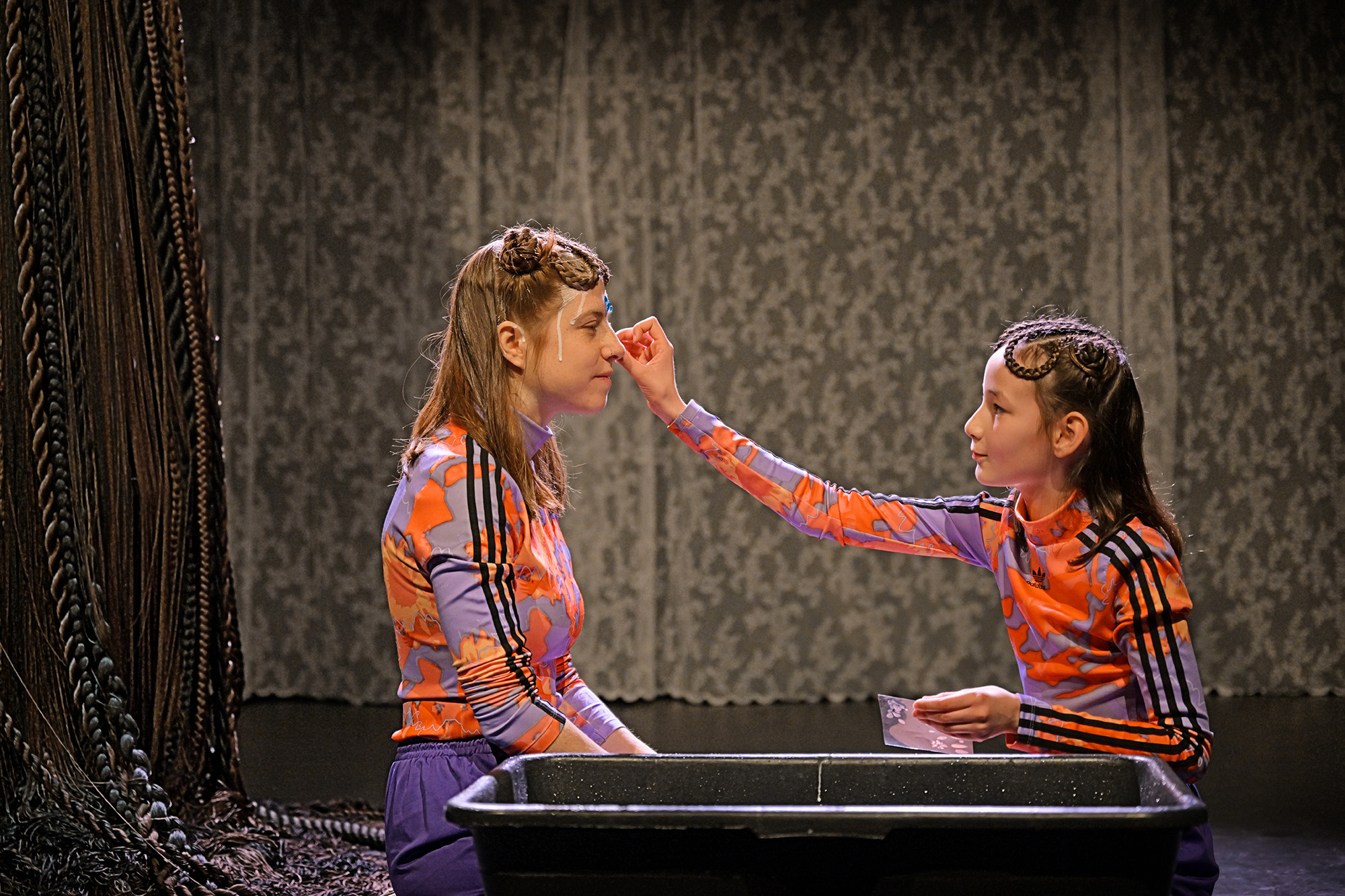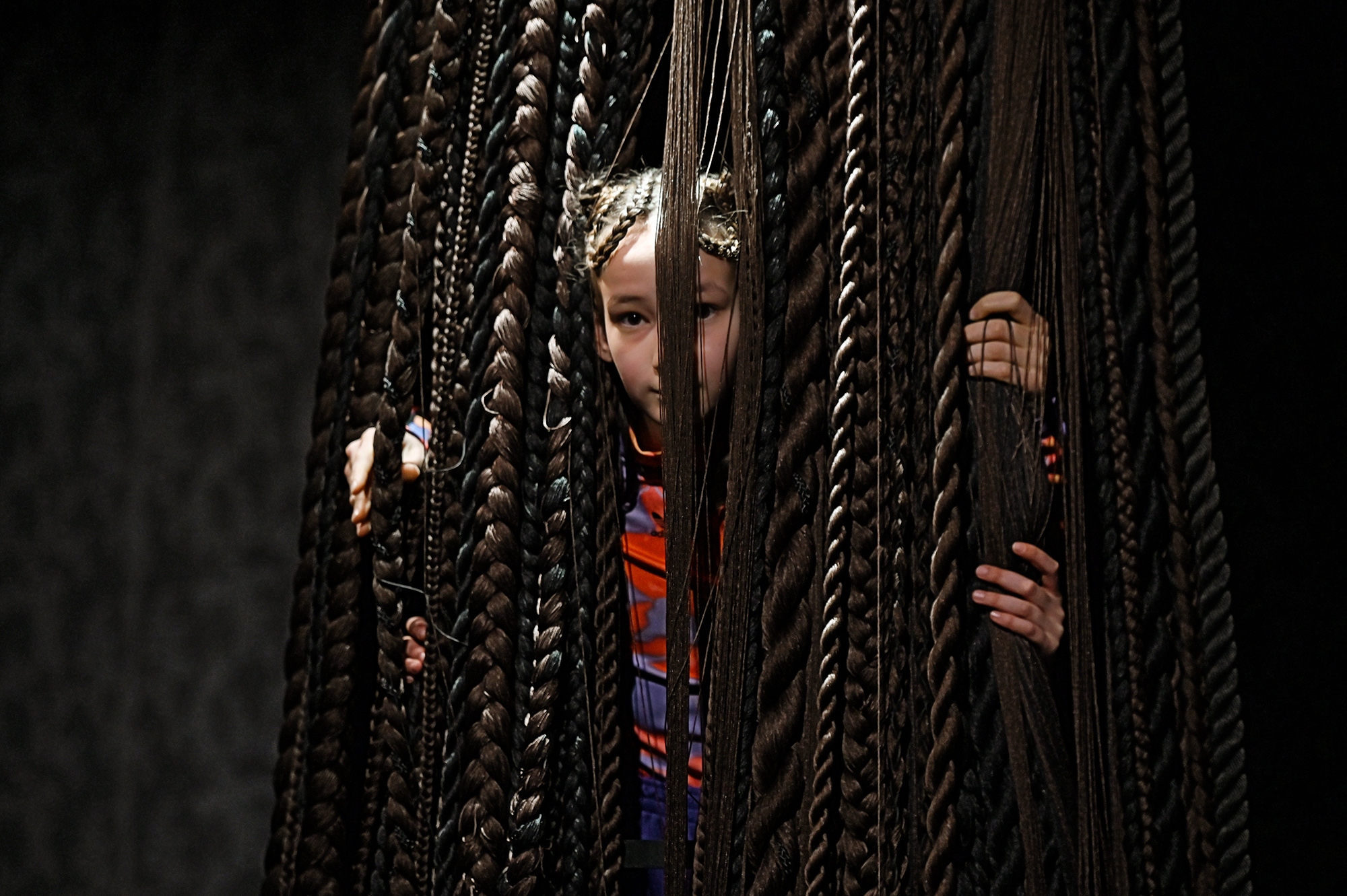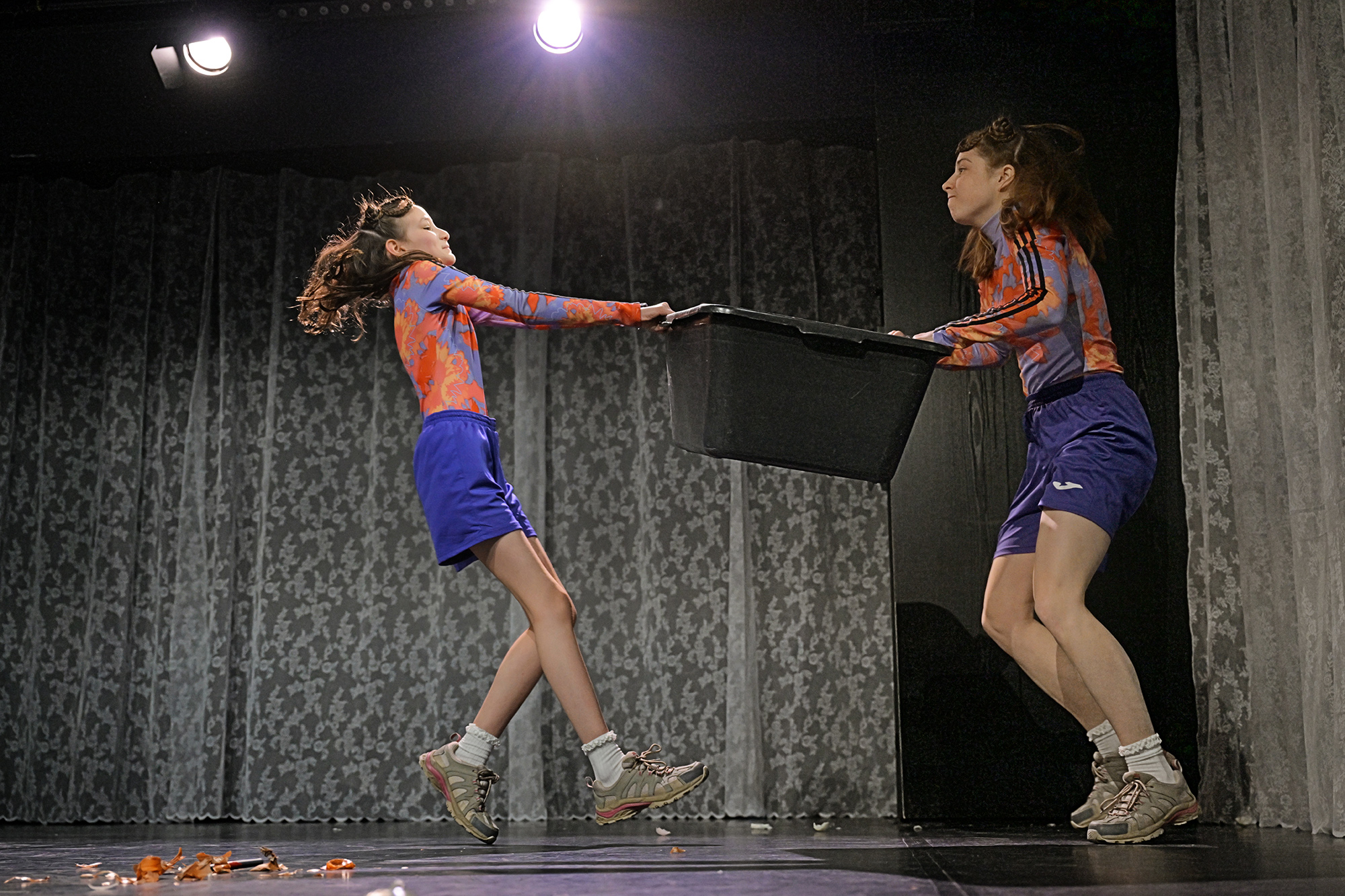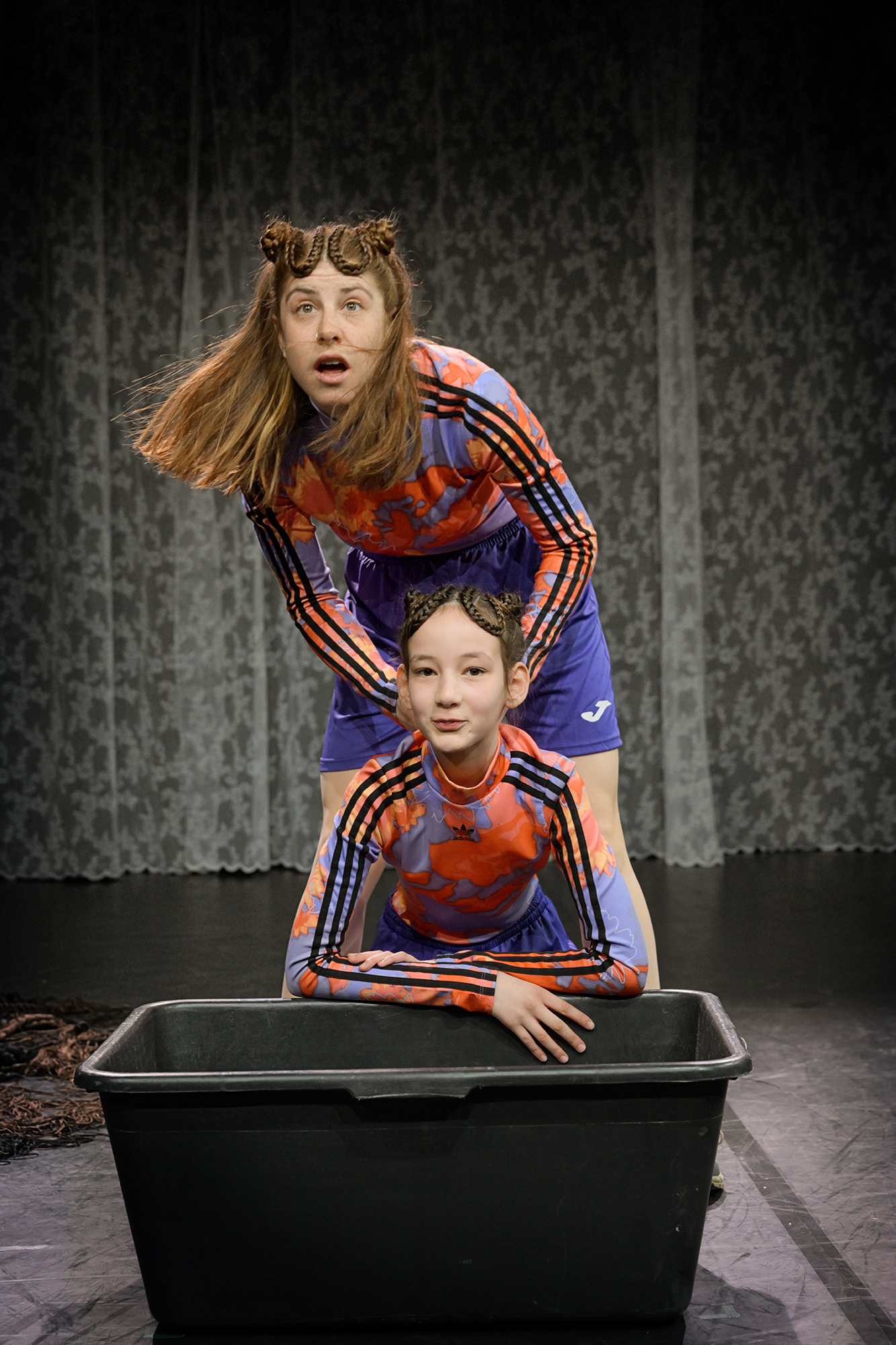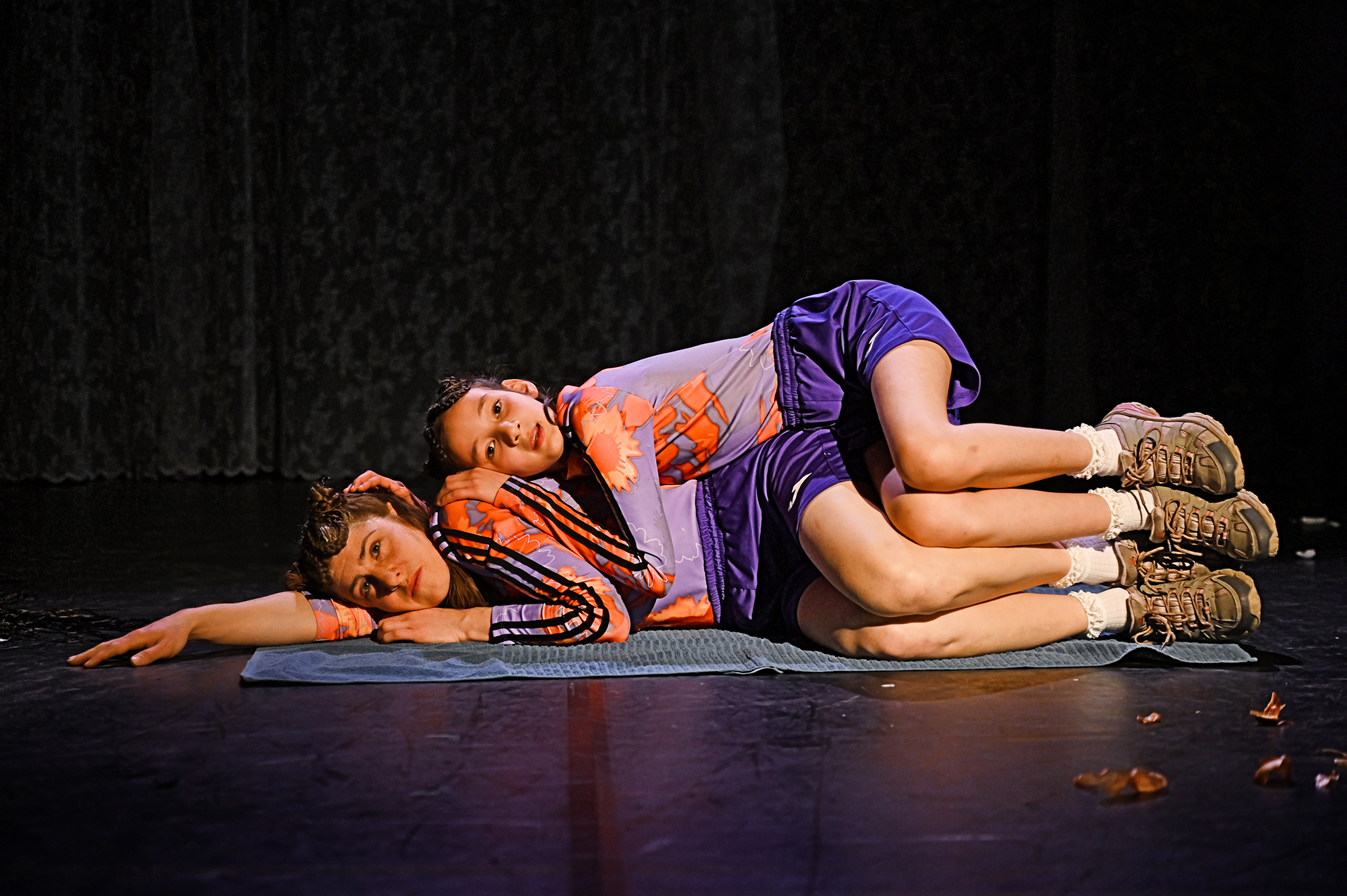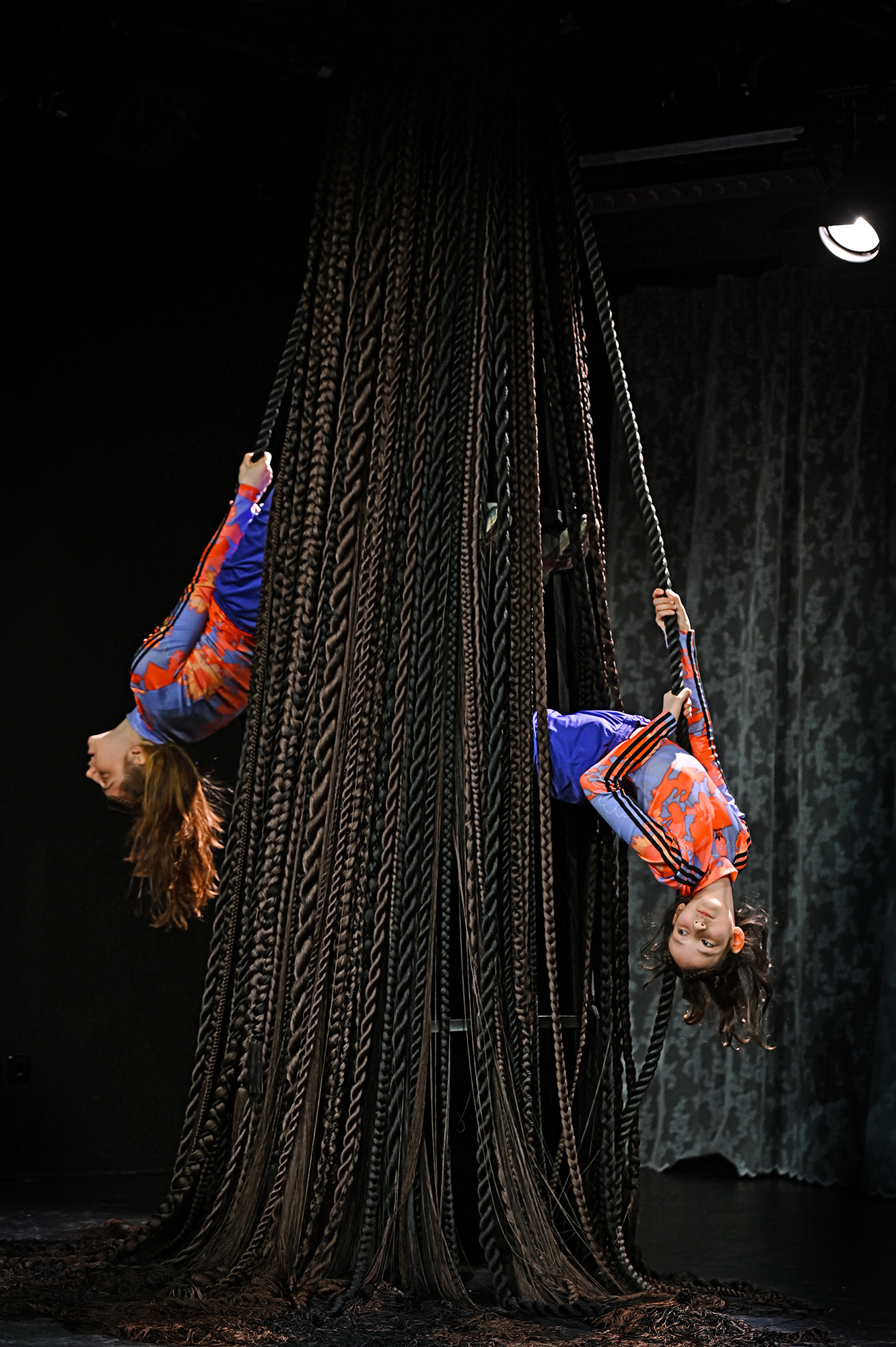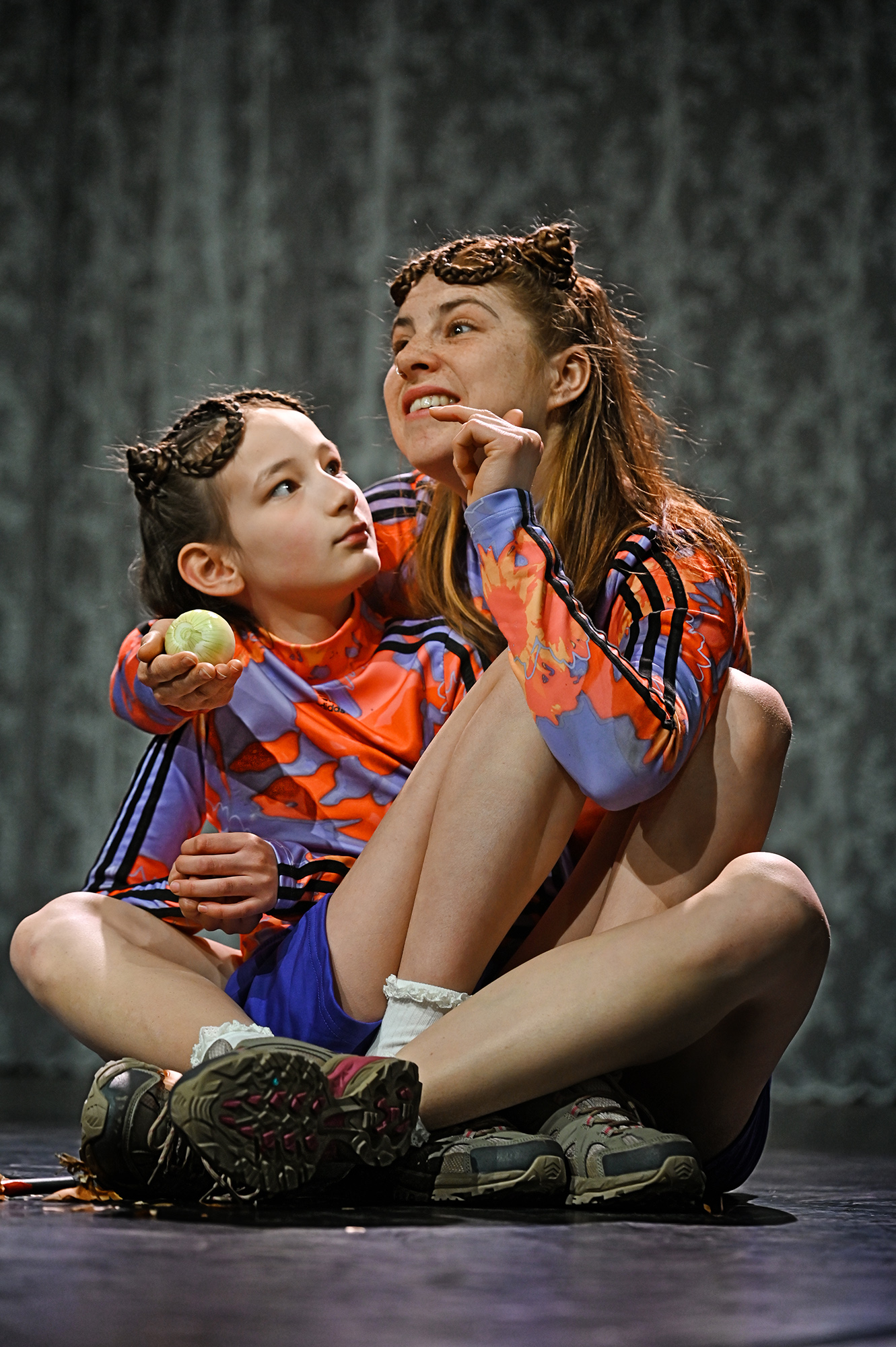Warum das Kind in der Polenta kocht
Based on the novel by Aglaja Veteranyi
Content
“I only know my country by smell. It smells like my mother’s food. My father says you remember the smell of your country everywhere, but you only recognise it when you’re far away.”
“Warum das Kind in der Polenta kocht” is the story of a young girl growing up between two worlds: the colourfully transfigured homeland of circus and caravan and the harsh reality of being a constant stranger on the road.
An actress and a young girl on stage at JES confront the story of Agalja Veteranyi. Together with director Yeşim Schaub, they search for the multi-layered, sometimes contradictory multilayered feeling of being a stranger via the opposing views of the characters, which are repeatedly interrupted by precise imagery, and deal with it impressively.
How is it possible to share the experience of homelessness despite different histories, ages and backgrounds? Especially in times of ongoing wars and refugee movements, Aglaja’s search for a place she can finally settle intersects inseparably with the reality that surrounds us.
© 1999 by DVA Verlag, in the Penguin Random House Verlagsgruppe.
Notes on sensory stimuli
Sensory impressions such as bright light, loud noises or sudden events can be overstimulating or overwhelming for some people. That’s why you’ll find a list of sensory stimuli in “Warum das Kind in der Polenta kocht” here. They may be good to be aware of for you or someone who is attending the performance with you.
– A few minutes after the performance begins, the light flickers and several points of light move through the room. The light briefly shines into the auditorium. The effect lasts approx. 15 seconds.
– Use of music and dripping noises.
– Weak light, darkness, rapid light changes and flickering light tubes. Attention: Stroboscope-like effects will be used for a brief moment. Feel free to contact us!
– Feathers and water fall/drip from the ceiling onto the stage.
– A raw onion is eaten, which produces a strong, typical odor.
– Use of a wind machine to the right of the stage set, causing a curtain to move slightly back and forth.
– On stage, artificial hair hangs around a scaffold, which the players climb up, hang down and disappear into. Sometimes they can only be seen with individual body parts.
– The players show big emotions.
– The players speak to the audience and occasionally play to them.
– In one scene, a player scratches her thigh audibly and quickly for about 10 seconds.
– A player washes her hair with a white, milky liquid.
– In one scene, the two players spit into a bathtub. Later, they show the audience the saliva stains.
If you have any concerns or questions, please contact us at ticket@jes-stuttgart.de. We will be happy to advise you and work out together how we can help.
Content Notes
This play deals with themes of homelessness and abandonment by parents. Stories from life in a children’s home are retold.
In one scene in the play, thoughts of self-harm and suicide are alluded to for a moment.
Ages 12 and up, grades 6–9
Duration: approx. 65 minutes
Prices: Children/young adults €7.00, adults €12.00
Venue: Upper Foyer (Seating capacity 60)
Besetzung
Production
Stage and costumes
Dramaturgy
Lighting & Sound
Music & lyrics
Theater pedagogy
Technical
Katja Kopić (FSJ)
